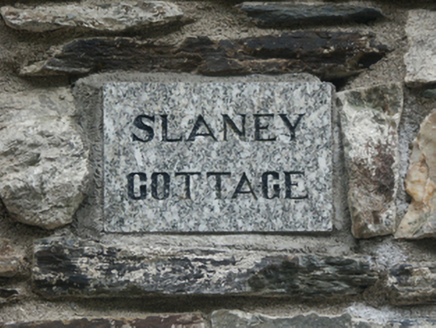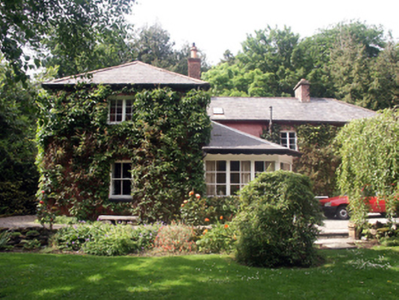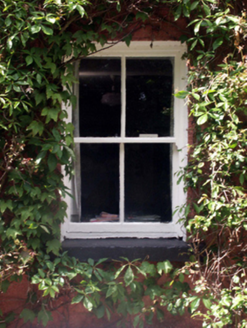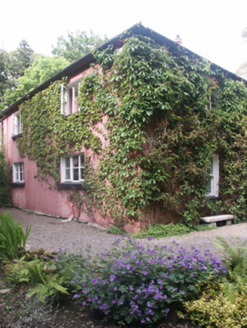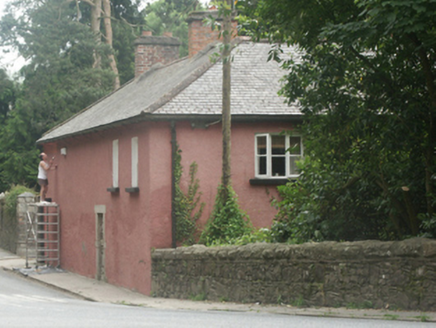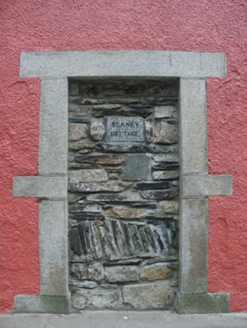Survey Data
Reg No
15602016
Rating
Regional
Categories of Special Interest
Architectural, Artistic, Historical, Social
Original Use
House
Historical Use
Barracks
In Use As
House
Date
1700 - 1839
Coordinates
291424, 156975
Date Recorded
13/06/2005
Date Updated
--/--/--
Description
Detached three-bay single-storey house with half-dormer attic, extant 1839, on an L-shaped plan centred on single-bay single-storey projecting glazed porch abutting single-bay full-height projecting end bay; two-bay (west) or single-bay (east) full-height side elevations with three-bay full-height rear (north) elevation. In alternative use, 1839. Hipped slate roof on an L-shaped plan with terracotta ridge tiles, red brick Running bond chimney stacks having stepped capping supporting terracotta octagonal pots, central rooflight to front (south) pitch, and cast-iron rainwater goods on roughcast eaves retaining cast-iron downpipes. Part creeper- or ivy-covered roughcast walls. Central door opening. Square-headed window openings with cut-granite sills, and concealed dressings framing two-over-two timber sash windows (ground floor) or timber casement windows (half-dormer attic). Square-headed central door opening to rear (north) elevation with cut-granite block-and-start surround framing coursed rubble stone infill. Set in landscaped grounds with rear (north) elevation fronting on to road.
Appraisal
A house representing an integral component of the domestic built heritage of Bunclody with the architectural value of the composition suggested by such attributes as the deliberate alignment maximising on scenic vistas overlooking the River Slaney; the angular plan form centred on a restrained doorcase; the somewhat disproportionate bias of solid to void in the massing; and the roof showing a small cut slate finish. Having been well maintained, the elementary form and massing survive intact together with substantial quantities of the historic or original fabric, both to the exterior and to the interior, thus upholding the character or integrity of a house making a pleasing visual statement in a sylvan street scene. NOTE: Occupied as a garrison following the so-called "Battle of Newtownbarry" (1st June 1798) and subsequently named as "Infantry Barracks" on the first edition of the Ordnance Survey (surveyed 1839; published 1841).
